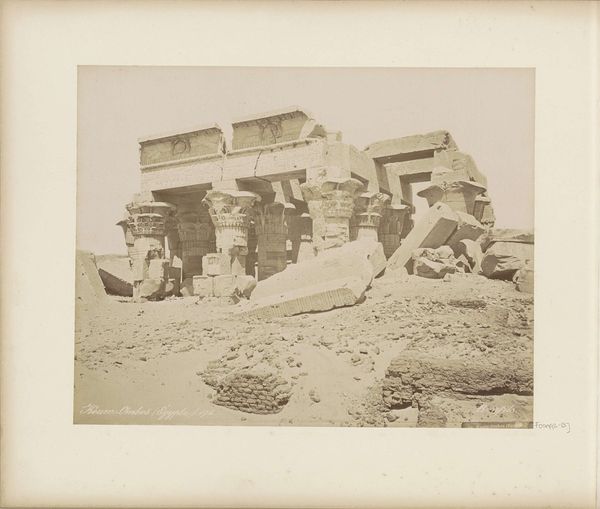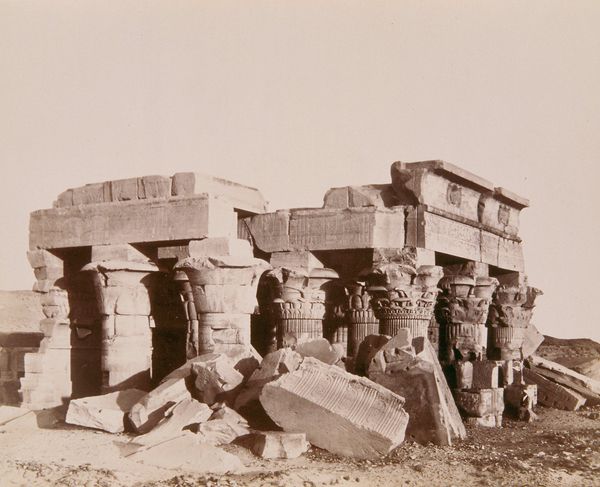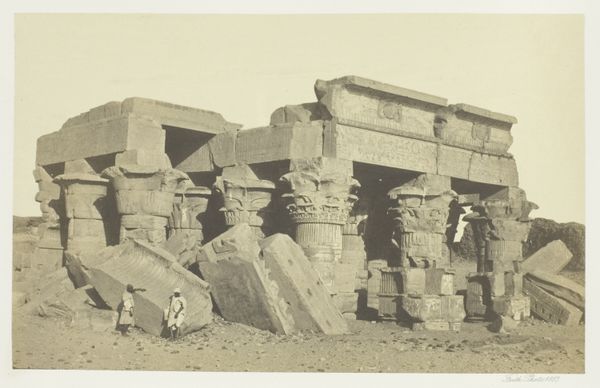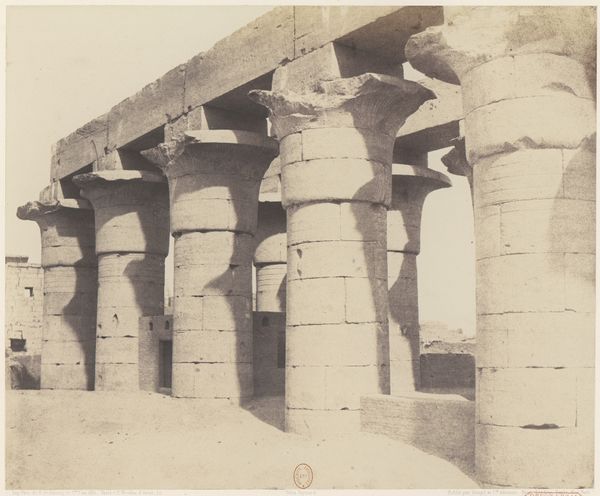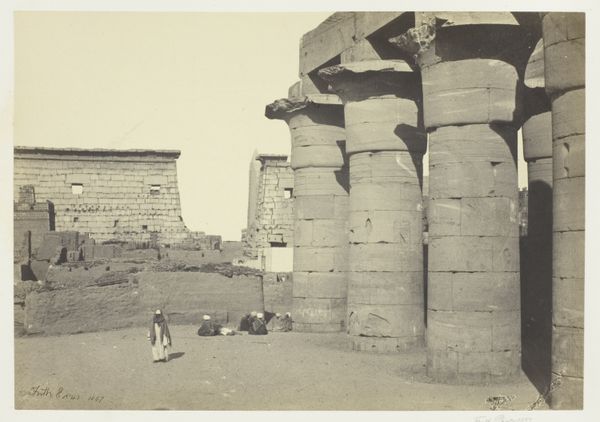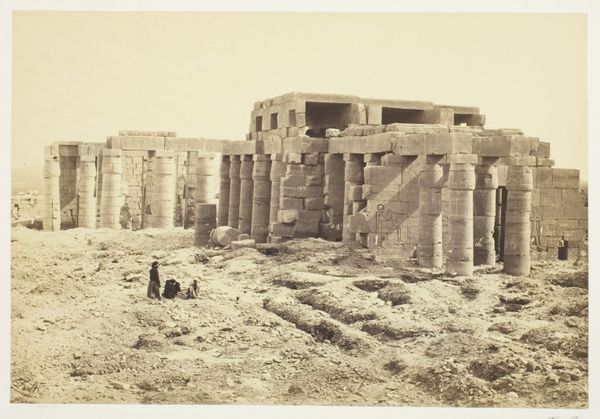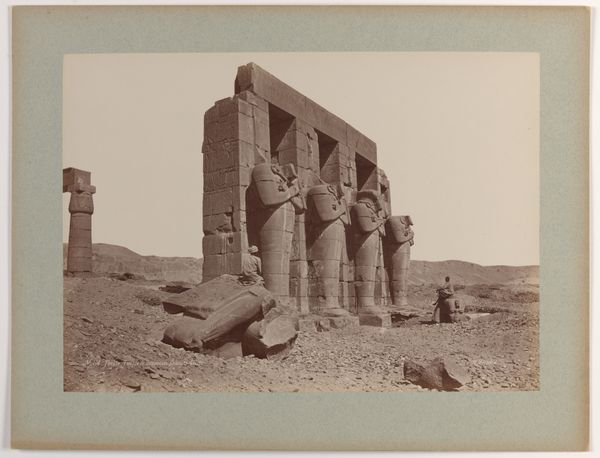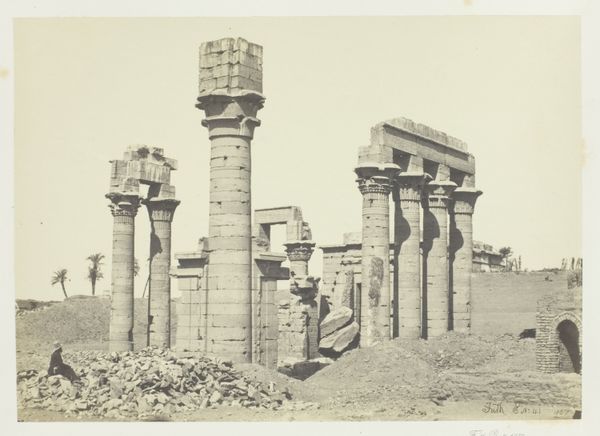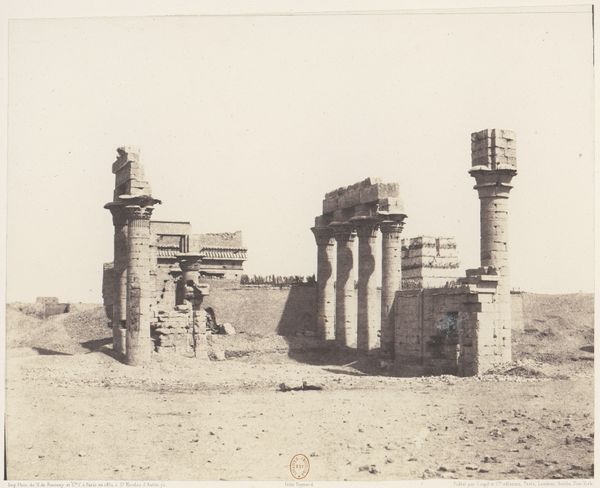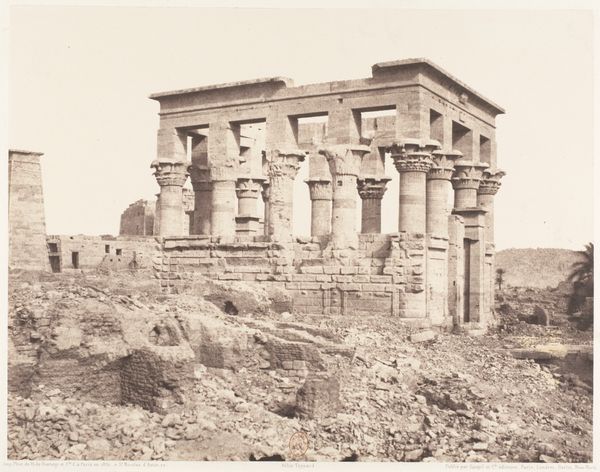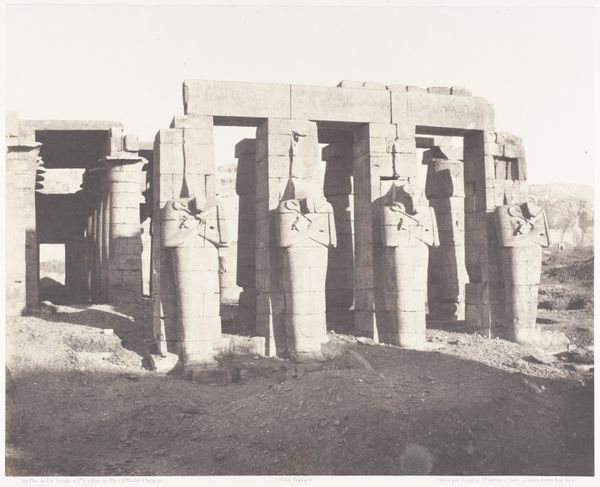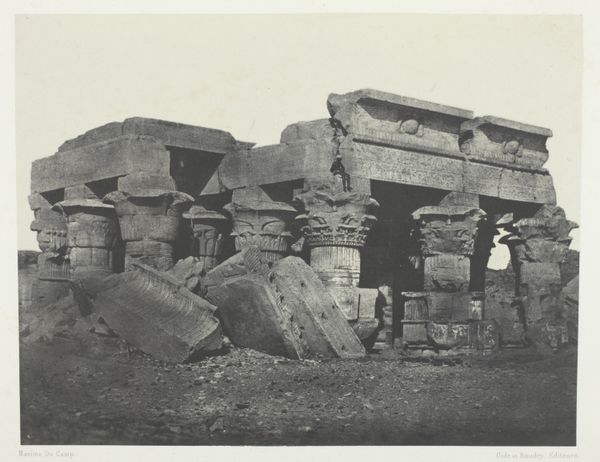
Kôm-Ombou (Ombos), Vue Générale des Ruines 1851 - 1852
0:00
0:00
daguerreotype, photography, architecture
#
daguerreotype
#
outdoor photography
#
photography
#
ancient-mediterranean
#
arch
#
monochrome photography
#
architecture
#
monochrome
Dimensions: 23.8 x 30.7 cm. (9 3/8 x 12 1/16 in.)
Copyright: Public Domain
Editor: Here we have Félix Teynard's 1851-1852 daguerreotype, "Kôm-Ombou, Vue Générale des Ruines," a stark depiction of ancient ruins. It's beautiful but also haunting, seeing these monumental stones so eroded. What strikes you most about this photograph? Curator: For me, the photograph invites a reading that considers not only the grand ruin depicted, but also the materiality of the image itself. The daguerreotype, as a process, depended upon specific materials – silver-plated copper, mercury vapors. These weren't neutral choices, but materials embedded within global systems of trade and extraction. How does this materiality, this reliance on specific materials, impact our understanding of the ruined temple? Editor: That’s an interesting point, I hadn’t considered it that way. So, you're suggesting that the choice of daguerreotype – a relatively new and arguably precious technology at the time – plays a role in how we interpret the subject? Curator: Precisely. Teynard chose a process that was both scientific and aesthetically refined. The shimmering silver surface of the daguerreotype mimics, in a way, the lost grandeur it depicts. Think about the labor involved: the mining of materials, the skilled work in creating the photographic plate, the arduous journey to photograph the site. The final print aestheticizes colonial encounter and the social process. It creates value around the ruin as object and image. Editor: It’s like a double-layered history, then. The history of the temple, and the history embedded in creating this specific image of it. Do you think it also comments on our contemporary relationships to ancient architectural wonders? Curator: Definitely. It brings forth issues related to labor, commerce, extraction, and how the very act of representing antiquity contributes to systems of capital. And I also ask myself, what conditions allowed for a scene from this distant past to be captured by 19th-century processes of labor and consumption? Editor: I never would have looked at it that way without your insight. I'll definitely remember to think more critically about the 'how' of art in addition to the 'what.' Curator: Exactly, remembering to look closely at the how reminds us that everything is interconnected.
Comments
No comments
Be the first to comment and join the conversation on the ultimate creative platform.

